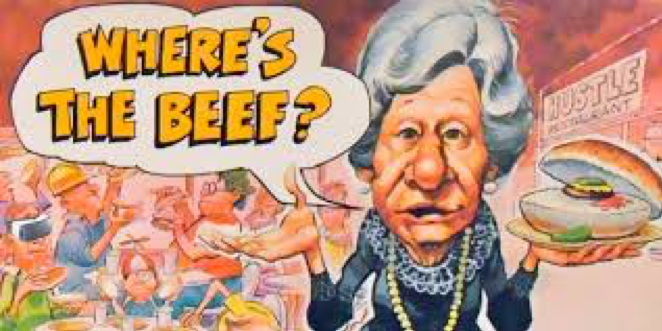Where’s the Beef 2: Impact of State Scope of Practice Laws (another straw man)

This project explored the effects of nurse practitioner (NP) scope of practice (SOP) legislation on the distribution and practice patterns of NPs as well as their billing practices. The goal was to understand where and how NPs are practicing, identify barriers that limit the degree to which NPs are practicing to the full extent of their education and training, and to inform policymakers as they seek to remove barriers in order to fully utilize NP to support healthcare delivery in the United States.1
Seems fair right? But in this first statement of the document, you can already see the bias being set up: “practicing to the full extent of their education and training.”If you stop right there, the assumption being made at this point is that practicing to the full extend of ones education and training effects “distribution and practice patterns.” This seems consistent with mid-level groups talking points and rhetoric. As a former RN for 10 years followed by being an NP for 8 years, and now an MD, I never understood nor still don’t understand, and haven’t found an answer as to what comprises practicing to the full extent of their education and training. I’ve been licensed as a NP in states both with and without full practice authority (FPA) and found little difference on things I was and wasn’t able to do. Scopes of practice are delineated in the various nurse practice acts making scope of practice contingent on legislation and not education and training. It seems that if more scope of practice is desired, then a subsequent increase in education and training is warranted to make it so. But this isn’t the case. Case in point, California2and Kansas3. Both states looking for FPA through legislation and NOT through education and training. As I’ve written about before4, this document attempts to use the straw man argument in support of FPA by purporting increased access to care with FPA, and that not having FPA is somehow a barrier. This document doesn’t delineate exactly what the barrier is other than not having FPA. How exactly is not having FPA a barrier in and of itself? But this is the straw man and very easy to become caught up in arguing this debate. The debate at hand is not FPA to improve access to care rather whether or not NPs should have FPA in the first place or to practice with MD supervision/collaboration. As such, this document doesn’t opine. Have a blessed day.
REFERENCES:
- https://aspe.hhs.gov/system/files/pdf/167396/NP_SOP.pdf
- https://www.chcf.org/wp-content/uploads/2019/05/ExpandingNPRuralCommunities.pdf
- https://www.kcur.org/post/nurse-practitioners-try-shake-free-doctors-kansas-physicians-resist#stream/0
- https://authenticmedicine.com/straw-man-the-dishonesty-needs-to-stop/
Get our awesome newsletter by signing up here. We don’t give your email out and we don’t spam you.









In the fortysome years I’ve watched Reality disappear from the minds of most Americans, I’ve noticed a change in the tenor of debate.
In the old days, one side could be shown to be incorrect, and they would dutifully shut up, at the risk of losing face in public. Opinions on difficult things were studied by experts, who rendered opinions that were indisputable, except if one found facts contrary to the fundamental upon which their decision was laid.
Now, you can carry any old blowsy nonsense around, and your hogwash becomes a “narrative.” As such, it competes endlessly with every other narrative. That’s why we have a measles epidemic in America, fifty years after one would be suspected of confine-able lunacy if one questioned the value of vaccination.
You know where on the globe people don’t think like that? In Asia, the price of losing face is terrible. In China, Japan and Korea, one does not shout about one’s independent right to form opinions without a solid notice of the facts. And as we see, having a sense of honor about your name, and what you say, is leading these countries to the forefront of the globe, while America settles down into Emperor of Third World values.